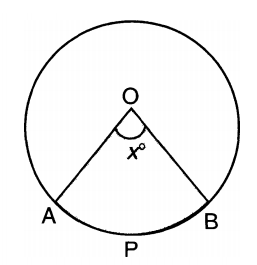Ask questions which are clear, concise and easy to understand.
Ask QuestionPosted by Fishida Ram 2 years, 8 months ago
- 3 answers
Posted by Shyam Kumar 2 years, 8 months ago
- 2 answers
Aastha Vats 2 years, 8 months ago
Posted by Garv Gala 2 years, 8 months ago
- 0 answers
Posted by Android Aarav 2 years, 8 months ago
- 1 answers
Puja Rani 2 years, 8 months ago
Posted by Arsh Mia 2 years, 8 months ago
- 1 answers
Posted by Raghav Adlakha 2 years, 8 months ago
- 0 answers
Posted by Ashwini S 2 years, 8 months ago
- 5 answers
Deepesh Kushmi 2 years, 8 months ago
Posted by Saurabh Tiwari 2 years, 8 months ago
- 1 answers
Posted by Karan Kumar 2 years, 8 months ago
- 2 answers
Rithika S 2 years, 8 months ago
Posted by Mohd Ali 2 years, 8 months ago
- 2 answers
Posted by Nirmitee Kushwaha 2 years, 7 months ago
- 1 answers
Preeti Dabral 2 years, 7 months ago
{tex}\frac { x } { a } + \frac { y } { b } = 2{/tex}
{tex}\frac { b x + a y } { a b } = 2{/tex}
{tex}bx + ay = 2ab{/tex}........(i)
{tex}ax - by = (a^2 - b^2){/tex}...(ii)
Multiplying (i) by b and (ii) by a
{tex}b^2x + bay = 2ab^2{/tex}.............(iii)
{tex}a^2x - bay = a(a^2 - b^2){/tex}........(iv)
Adding (iii) and (iv),we get
{tex}b^2x + a^2x = 2ab^2 + a^3 - ab^2{/tex}
{tex}x(b^2 + a^2) = 2ab^2 + a^3 - ab^2{/tex}
{tex}x(b^2 + a^2) = ab^2 + a^3{/tex}
{tex}x(b^2 + a^2) =a(b^2 + a^2){/tex}
{tex}x = \frac { a \left( b ^ { 2 } + a ^ { 2 } \right) } { \left( b ^ { 2 } + a ^ { 2 } \right) } = a{/tex}
Putting x = a in (i),we get
{tex}b \times a + a y = 2 a b{/tex}
{tex}a y = 2 a b - a b \Rightarrow a y = a b{/tex} or y = b
{tex}\therefore{/tex} solution is x = a, y = b
Posted by Saket Tiwari 2 years, 8 months ago
- 2 answers
Posted by Tripti Rawat 2 years, 8 months ago
- 2 answers
Posted by Shruti Singh 2 years, 9 months ago
- 1 answers
Shanu Yadav 2 years, 9 months ago
Posted by Shruti Singh 2 years, 9 months ago
- 2 answers
Posted by Yashvi Nain 2 years, 9 months ago
- 5 answers
Posted by Umpi Hibu 2 years, 9 months ago
- 3 answers
Posted by Vijayasri Venkatesan 2 years, 9 months ago
- 3 answers
Choudhary Kundan 2 years, 9 months ago
Posted by Gayatri Pathade 2 years, 9 months ago
- 2 answers
Posted by Punam Kumari 2 years, 9 months ago
- 1 answers
Muzaif Ur Rahman 2 years, 9 months ago
Posted by Aditya . 2 years, 9 months ago
- 1 answers
Posted by T G Full 2 years, 7 months ago
- 1 answers
Preeti Dabral 2 years, 7 months ago
Let the digits of the required 3 - digit number at hundreds, tens and ones places be {tex}a - d, ~ a , ~ a + d{/tex} respectively
Then their sum = 15
i.e, {tex}a - d + a + a + d{/tex} = 15
{tex}\Rightarrow{/tex} {tex}3a{/tex} = 15
{tex}\Rightarrow{/tex} {tex}a{/tex} = 5
Required three digit number = {tex}100(a - d) + 10a + a + d{/tex}
= {tex}100a - 100d + 10a + a + d{/tex}
= {tex}111a - 99d{/tex}
Number obtained by reversing the digits = {tex}100(a + d) + 10a + a - d{/tex}
= {tex}100a + 100d + 10a + a - d{/tex}
= {tex}111a + 99d{/tex}
According to the question,
{tex}111a + 99d = 111a - 99d - 594{/tex}
{tex}\Rightarrow{/tex} {tex}594 = 111a - 99d - 111a - 99d{/tex}
{tex}\Rightarrow{/tex}{tex}594 = -198d{/tex}
{tex}\Rightarrow{/tex}{tex}\frac { - 594 } { 198 } = d{/tex}
{tex}d = -3{/tex}
The number is 111a - 99d
{tex}111 \times 5 - 99 \times - 3{/tex}= 852
555 + 297 = 852
Therefore, Number is 852.
Posted by Mitali Negi 2 years, 9 months ago
- 1 answers
Posted by Sukhveer Singh 2 years, 9 months ago
- 2 answers
Posted by Akm Akm 2 years, 9 months ago
- 1 answers
Parth Yadav 2 years, 9 months ago
Posted by Srusthi Sb 2 years, 7 months ago
- 1 answers
Preeti Dabral 2 years, 7 months ago

As per given condition
Area of sector OAPB = {tex}\frac { 5 } { 36 }{/tex}times the area of circle
{tex}\therefore \quad \pi r ^ { 2 } \times \frac { \theta } { 360 } = \frac { 5 } { 36 } \pi r ^ { 2 }{/tex}
{tex}\therefore \quad \pi r ^ { 2 } \times \frac { x } { 360 } = \frac { 5 } { 36 } \pi r ^ { 2 }{/tex}
{tex}\frac { x } { 360 } = \frac { 5 } { 36 }{/tex} or,
{tex}\begin{array}{l}36\mathrm x=360\;\times5\end{array}{/tex}
{tex}\\\mathrm x=\frac{360\;\times5}{36}{/tex}
{tex}\\\mathrm x=\;10\;\times5{/tex}
{tex}\\\mathrm x\;=\;50{/tex}

myCBSEguide
Trusted by 1 Crore+ Students

Test Generator
Create papers online. It's FREE.

CUET Mock Tests
75,000+ questions to practice only on myCBSEguide app
 myCBSEguide
myCBSEguide
Rohit Kumar 2 years, 8 months ago
0Thank You